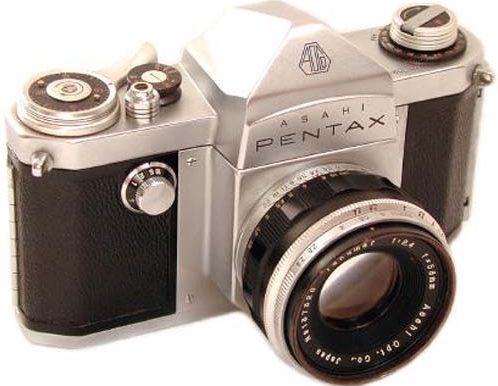Capturing the best moments of your life in photos these days is easy. Take out your smartphone, turn on the built-in camera and "click" everything you see. However, over time, the understanding comes that the frames do not always reflect what the eye sees. Smartphones do not have the same capabilities as cameras. And then you will definitely want to buy a good camera and start creating! The editorial staff of the site "bestx.htgetrid.com/en/" offers readers a review of "The Best Cameras for Beginning Photographers in 2020", based on customer reviews and expert recommendations.
A camera is a very complex product. To learn how to take high-quality pictures, you need to know its structure and principle of operation. And you need to start from scratch.
Content
The first cameras
One of the first to introduce mankind to photography was the French artist and inventor Louis Daguerre. Hence the name of the first photographs - daguerreotypes.
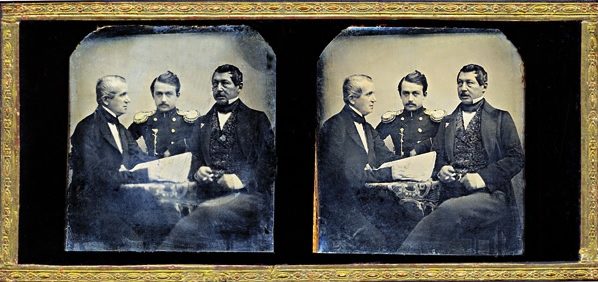
The Daguerre apparatus was a wooden box, into the front of which a lens was cut. Opposite it was a plate covered with a photosensitive composition. Light passing through the lens left the image on the plate, causing a chemical reaction of the photographic emulsion. To fix the resulting image, the plate was treated with special reagents. The lens in the front of the device is fixed.

If the distance to the subject was changed, the lens had to be moved to obtain an image with sufficient sharpness on the photographic plate. Shooting objects in the studio, at the same distance, the pictures were always clear. For shooting on the ground, for each object it was necessary to look for a certain position of the lens relative to the photographic plate in order to obtain images with sufficient sharpness.
Exposure and sensitivity
The first photographic plates had low photosensitivity. Customers had to keep still in front of the camera for a very long time to get a high-quality picture.
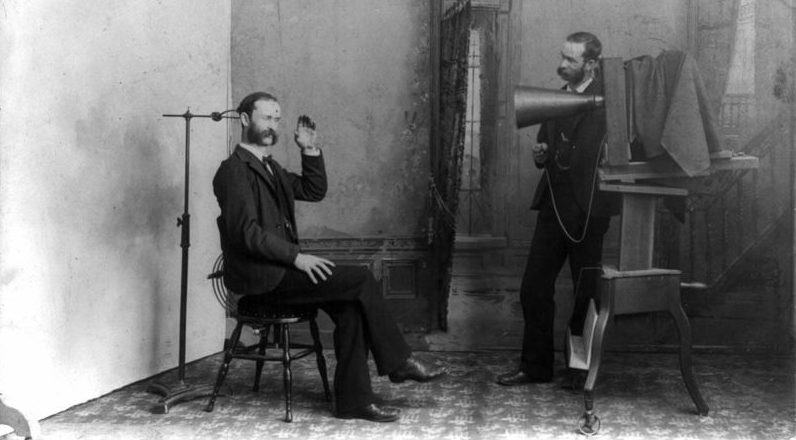
The time required for the exposure of the photographic plate to light is called exposure, or more simply, shutter speed. A fast shutter speed is needed to shoot moving objects. Otherwise, the image will be "blurry". But with a slower shutter speed, less light is exposed to the film. To obtain a high-quality image, you need to add lighting, or increase the light sensitivity of the film (denoted by ISO).
Aperture and depth of field
There are two ways to increase the amount of light: illuminate the object with additional lamps or enlarge the lens entrance aperture. The diameter of the inlet is regulated by a special device - a diaphragm.
Interesting! To understand the mechanism of operation of the diaphragm, let us recall how the pupil of the human eye reacts to changes in illumination. In bright light, it narrows, letting in less light, and expands in darkness, letting in even the slightest rays of light.
The aperture of the camera is assembled from several blades (from 8 or more). They are set in motion by turning the lens ring. When diverging and approaching relative to the axis of the lens, the diaphragm blades expand or narrow the "pupil" of the camera.
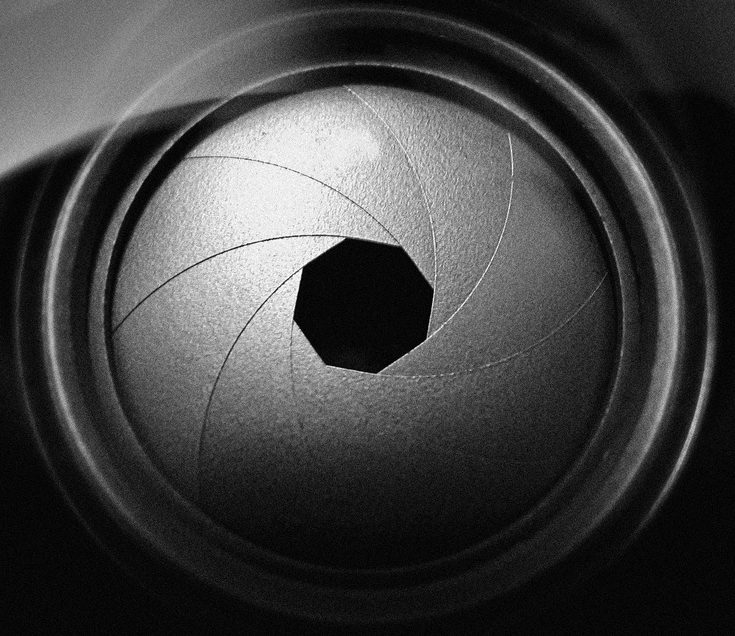
The question arises, why not set the largest aperture and get enough light? The fact is that changing the aperture changes the depth of field of the image. A regular ruler shot at a small aperture will be clearly visible almost along its entire length, while with a full aperture open, only a small part of it will be in sharpness.
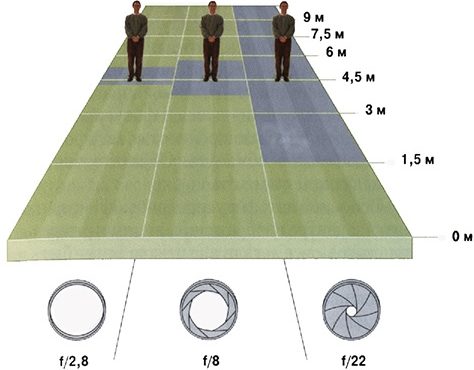
Modern photographic equipment has gone far ahead of the Daguerre apparatus. Digital devices are instant photo and instant printing, without the use of chemicals. But the laws of optics cannot be canceled, and the concepts of exposure (shutter speed), aperture, photosensitivity are as important as in the days of Louis Daguerre.
How a digital camera works
In film cameras, light acts on the photosensitive layer of the photographic film, causing certain chemical reactions in it.
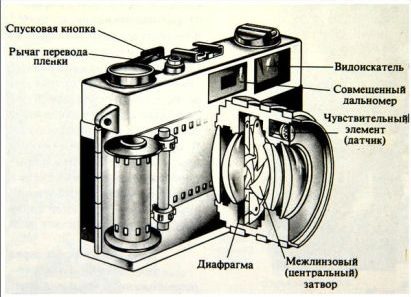
After processing the film with special reagents, the photographer gets an imprint of the object in the negative. To obtain a photograph, the negative must be projected onto photographic paper, the surface of which also has a light-sensitive layer, then the photograph must be developed and the image must be fixed with other reagents. The whole process, until the finished photograph is obtained, is carried out in the dark. A red light is used when printing photographs.
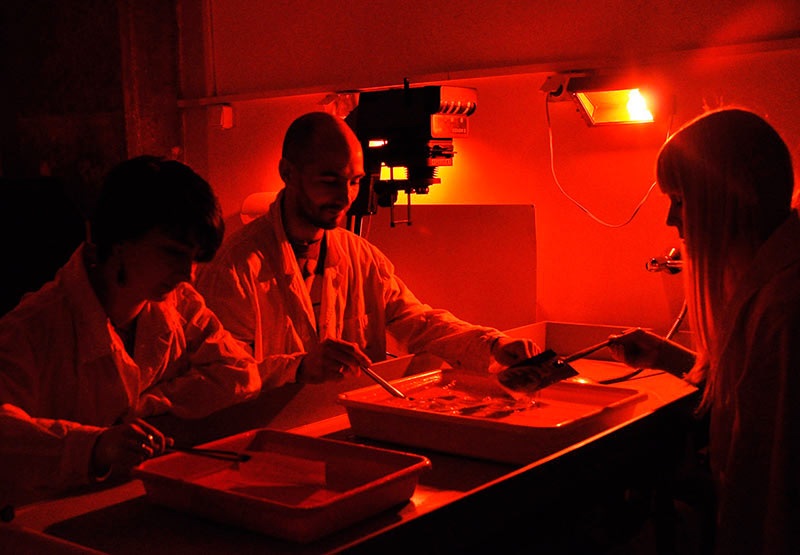
A digital camera works very differently. From everything that was familiar to us in film cameras, only the lens and its diaphragm remained in digital cameras. Getting into the lens aperture, the light is focused by the lenses and rests against the shutter.
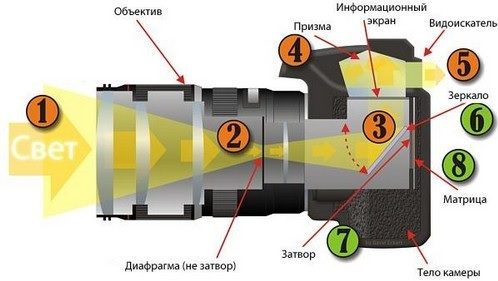
Behind the shutter is the most complex and expensive element - the matrix. Its first layer, a Bayer filter, separates the light beam into different spectrum colors and distributes them across the matrix.
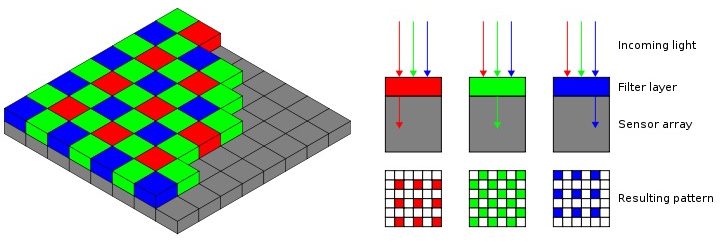
Divided into colors, the light hits the light-sensitive elements of the matrix, which absorb light and emit electrons.

This converts light into electrical signals that can be encoded, transmitted to other devices, stored, processed, etc.
The number of light-sensitive elements of the matrix is estimated at millions and even tens of millions. It is clear that the more millions of sensitive elements (pixels), the sharper and richer the frame will be. Million, in the international SI system, is denoted by the prefix "mega". Therefore, if, getting acquainted with the technical characteristics of your device, you see the matrix size equal to 15 megapixels, you should know that it (the matrix) consists of fifteen million light-sensitive elements.
Having passed through the matrix, the light, converted into electrons, enters the processor of the device, where it is processed and transformed into a photograph, which immediately appears on the screen of the device.
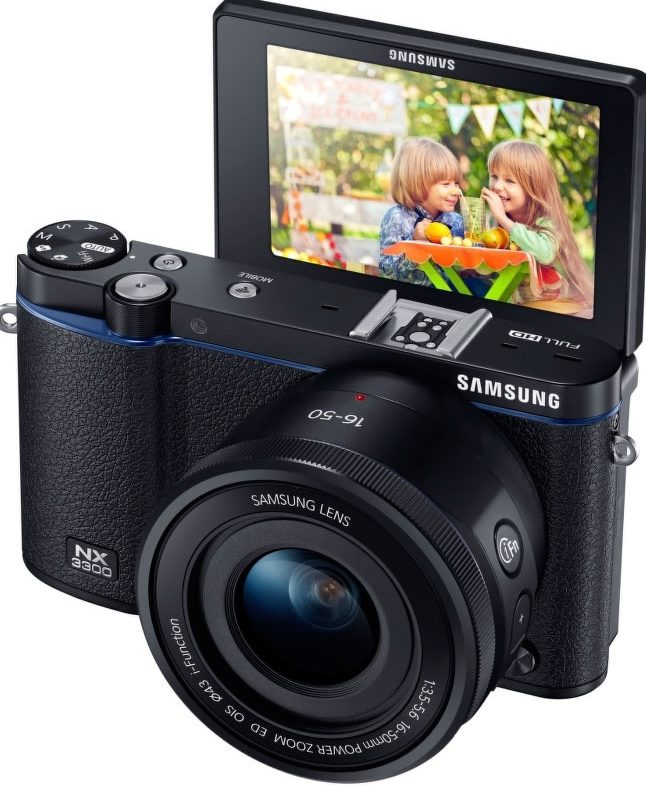
Types of digital cameras
There are three types of cameras: SLR, compact and hybrids of the first two types, popularly referred to as "mirrorless". Consider the features of their device and capabilities.
Mirror machines
This type of apparatus got its name due to its design features. A beam of light, passing through the optics, hits the mirror, is reflected from it onto the pentaprism, from where the image enters the viewfinder, and is also displayed on the LCD screen.
Interesting! The first SLR film devices transmitted an inverted image to the viewfinder. The engineers of the Japanese company Asahi managed to eliminate this effect. They passed the image reflected by the mirror through the pentaprism, placing it in the upper protrusion of the apparatus, which is characteristic of all DSLRs. The world's first pentaprism camera was called the Asahi Pentax. Soon the company itself began to be called this name.
SLR cameras are large due to the presence of a mirror, interchangeable optics and a large matrix, high image quality. To determine the degree of illumination, the devices are equipped with a TTL exposure meter (from the English Through the Lens - through the lens). The optical zoom will allow you to enlarge the picture when shooting a movie. Using the "DSLR", beginners will be able to realize any of their creative ideas. To do this, you need to have several (for a start, three are enough) interchangeable lenses with different focal lengths.
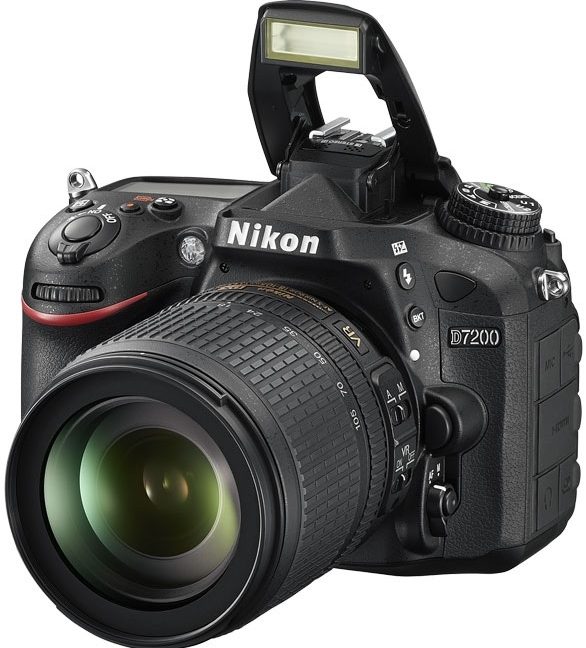
Compact camera
They are popularly called "soap dishes" for their small size, allowing them to be carried in a pocket. Change of optics is not provided by the design. The dimensions of the matrix in "soap dishes" are always smaller than in DSLRs. Accordingly, the creative potential of a photographer with a compact in his hands is significantly lower than that of the owner of a DSLR. And the quality of the pictures too. True, they are cheaper. However, there are some very advanced compact models with characteristics comparable to budget models of DSLRs. But their price is much higher.
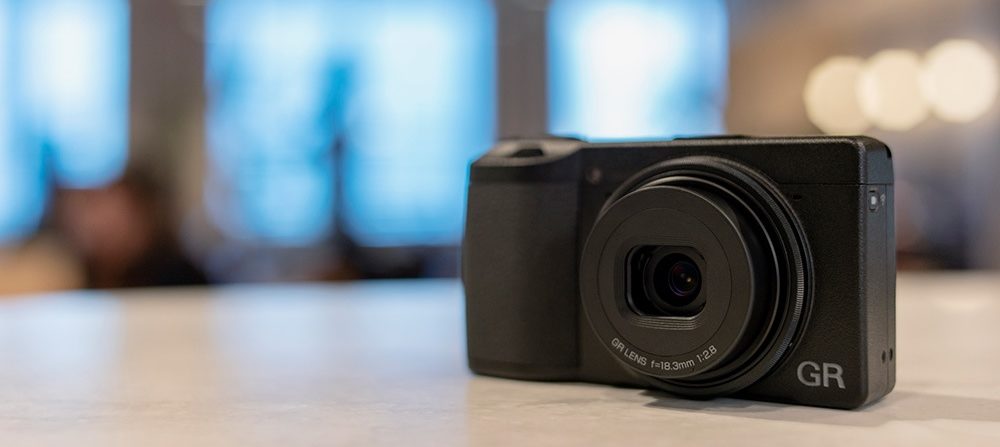
Mirrorless cameras
These devices are a kind of hybrid of "DSLR" and "soap dish". They have large matrices, interchangeable optics. The absence of mirrors makes them more compact, lighter, quieter and more reliable due to the lack of mechanical parts. With mirrorless cameras, you can take great photos that are not inferior in quality to mirror devices. It is difficult to navigate the price. You can find a branded compact, the purchase of which will cost more than another SLR camera, or you can buy a mirrorless camera for the same money as a DSLR version. It all depends on the technical characteristics, quality, functionality and brand.
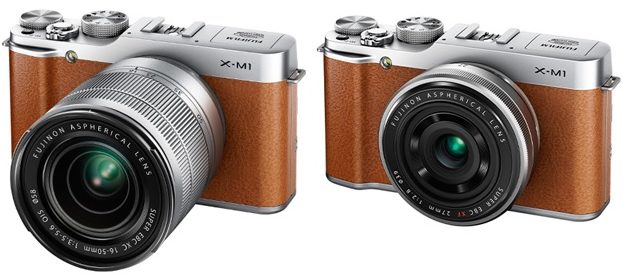
Criteria for choosing a digital camera
Product type selection
Choose your option from the three listed: compact, DSLR or mirrorless. The mirror technique will provide more opportunities for shooting in various genres, be it portrait, landscape, dynamic moments (sports events, weddings, etc.). For long-distance travel, it is heavy and not always convenient.
Soap trays are more suitable for travelers. There are quite advanced compact models, with large enough matrices and even interchangeable optics, which will provide a fairly good quality of frames and will always be at hand. True, not everyone can afford their cost. It's better to forget about cheap compacts, because you will get the same quality photos using your smartphone.
The mirrorless is suitable "for a feast, for the world." They are inexpensive, lighter than DSLR models, and the quality of the images is almost equal to them.
Cross the “professional” models off your list. Beginners do not need them, and they are indecently expensive. Excellent shots can be obtained using a device of the middle price range, without overpaying for unknown and unnecessary, at the stage of mastering the art of photography, super modes.
Crop factor
In simple terms, it is the difference between 35mm film format and sensor size. If the crop factor is one, the matrix size is equal to the film size. Such a camera is called full-frame. Medium-format models, which are very expensive, are equipped with matrices with sizes larger than the full format.
Crop, translated from English means "cut". Crop factor 2 indicates that the size of the matrix is half the size of a 35mm film frame, taken as a standard. The full format will be more expensive. At the same time, a crop of 1.5 - 1.6 makes it possible to get excellent shots. You can save a lot on this.
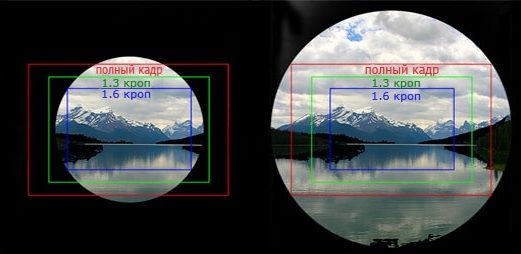
Which company is the best device to buy
There are a lot of companies that produce high-quality cameras. Here you need to pay attention to how widespread a particular brand is in our country. It depends on this whether you can use the services of service specialists if trouble happens to your “breadwinner”.Finding interchangeable optics for a less common model will be more difficult. There are approximate statistics on the prevalence of devices of some brands in Russia:
- Canon - 44%;
- Nikon - 37%;
- Sony - 11%.
- Olympus - 5%.
- Pentax - 3%.
It is easier for Canon or Nikon owners to find interchangeable lenses or to have their cameras repaired than Pentax owners. The list of the best manufacturers goes on. Our review presents popular models of some of them. Which company will buy the product better is up to you.
Camera selection by price
You decided to buy Canon, typed it into the search bar on Yandex - market and got a list of two dozen different models. How to choose? Go to the manufacturer's website. The latest models are offered there and there are no longer twenty, but only nine. The rest are out of production, but may be in warehouses.
Ditch the professional, full-frame (expensive) and somewhat outdated models. Thus, you will have to choose from only three models. Here you can already navigate the price. And remember that 70%, the quality of photos depends on the lens, and only 30% - on the "carcass" or "Body", as the people call the body of the device.
Cleaning the matrix from dust
Studying the characteristics, pay attention to devices with the function of cleaning the matrix from dust. When changing optics during a photo session, dust may get on the matrix, which will become noticeable in the pictures. The cleaning function will help get rid of this trouble.
What else should you pay attention to
Equipment
The interchangeable-lens device that comes with the base lens has a Kit prefix in its name. Products sold without a lens are labeled “body” or “body”. Whale equipment is somewhat more expensive. Carcasses enable owners to choose high-quality and expensive optics themselves. You won't be able to save on this.
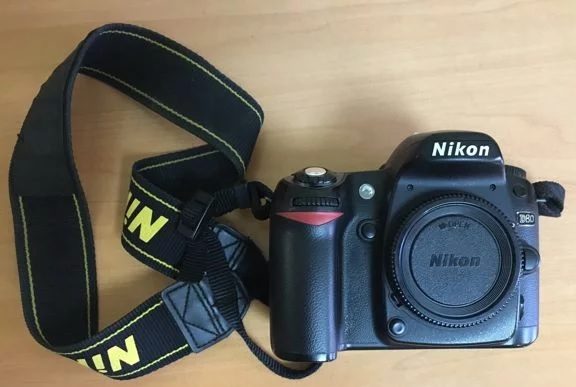
Optics change
Devices with the ability to change optics are equipped with bayonets - mounting devices that allow you to quickly and effortlessly change optics. The bayonet is equipped with connectors that provide electrical connection between the optics and camera electronics. Each manufacturer equips its products with proprietary bayonets. The entire line of optics from this manufacturer is produced for them.

Matrix dimensions
This refers to the physical size in millimeters of the sides of the matrix. The larger it is, the more pixels are located in the matrix and the larger the pixel sizes. Large matrices make it possible to take higher quality photographs, since with an increase in size, the light sensitivity increases, the noise level decreases and the cost of the device increases.
Focal length
This is the distance from the optical center of the lens to the sensor, or a characteristic of the visual approximation of the subject. The larger it is, the closer the subject will appear in the viewfinder. This parameter is determined only by the lens and is measured in millimeters. In addition to the degree of closeness, the focal length determines the angle of view, perspective and depth of field of the frame. Here are the lens focal length ranges and their capabilities:
- Lenses with a wide field of view (wide-angle) have a focal length of up to 35 mm. Used when shooting landscapes and architectural masterpieces.
- A focal length of 35 to 70 mm is called normal because it is closest to the field of view of the human eye. Such optics are good for filming reports.
- Lenses with a focal length of 70 mm or more are called telephoto lenses. Used when shooting a distant object.
By using attachments of a certain size, you can change the focal length of the lens. Many professionals use this technique.
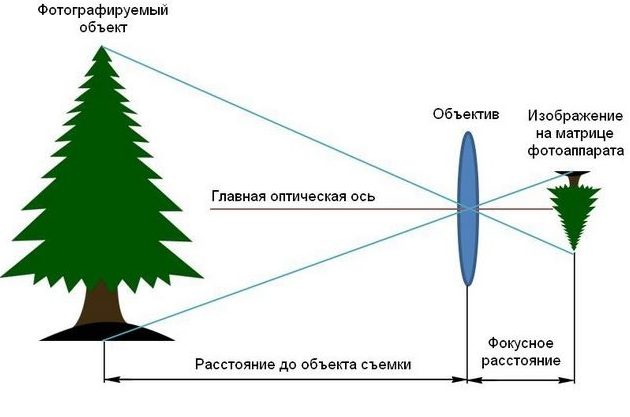
F-number concept
We have already learned about the concept of aperture. The f-number is the position in which you can set the aperture so that it lets in a certain amount of light. The larger the f-number, the less light will hit the sensor.Conversely, the lower the f-number, the more light will pass through the optics. The more light the optics can pass with a fully open aperture, the greater its aperture. It is different for each lens. By choosing optics with the smallest aperture number, you are choosing the fastest lens and you get the opportunity to take better pictures.
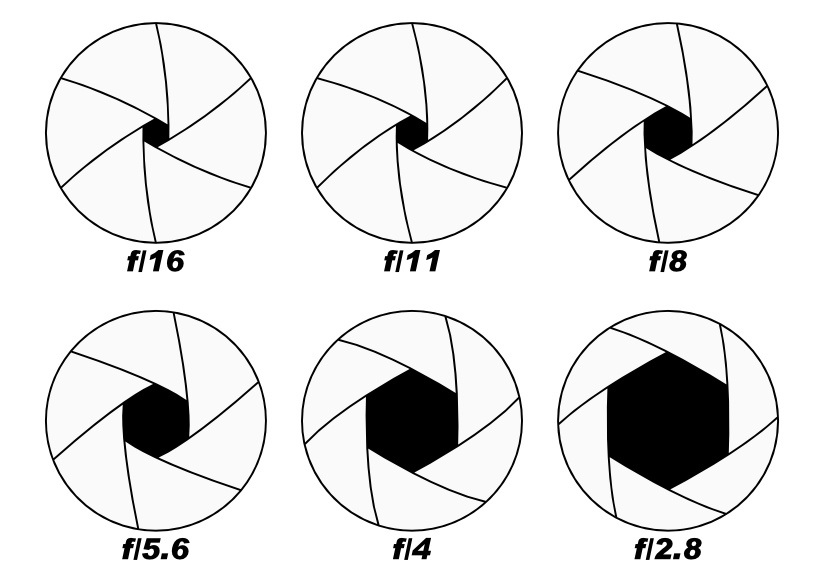
The camera can work in automatic mode. This means that you do not have to think for yourself what shutter speed to set and how much to open the aperture. If you are no longer a beginner, you will definitely start experimenting with manual settings for shooting parameters. In this case, you can combine manual settings with the automatic machine. When shooting moving subjects, set the shutter speed to 1/400 and select the shutter priority mode (Tv or S). The camera will automatically set the correct aperture. When shooting landscapes with maximum detail, set the aperture to f / 11 or f / 16. Set aperture priority mode (Av or A). Automation itself will select the optimal shutter response time.
Screwdriver
We are talking about the autofocus drive of some digital devices. Most often, the autofocus motor is built into the lens. Some manufacturers, such as Nikon, integrate an autofocus drive into the camera. The element that transfers rotation to the lens ring is called a screwdriver. This parameter is important when selecting interchangeable optics. If the camera does not have a "screwdriver", it is necessary to select optics with an autofocus motor.
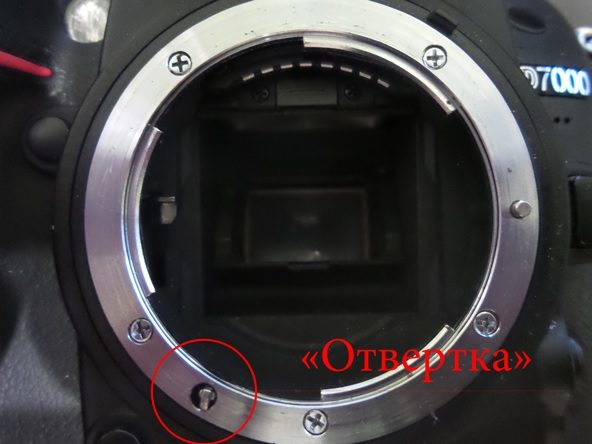
X-Syns
At low shutter speeds, the built-in flash in devices with a mechanical shutter does not have time to fully illuminate the frame. The X-Syns function is required to fire the flash only when the shutter is fully open. It is a kind of flash and shutter synchronizer, optimal and minimum exposure time.
Rangefinder
Having a digital camera on hand, you no longer need to determine the distance to the subject by eye. For this, the camera is equipped with an electronic rangefinder. The implementation of this function is different for each manufacturer. But the principle of operation is the same.
Optics
The lens design assumes a certain number of optical elements (lenses). Spherical lenses distort the image somewhat. Aspherical lenses, thanks to their shape, reduce distortion, simplify lens design and reduce the number of optical elements.
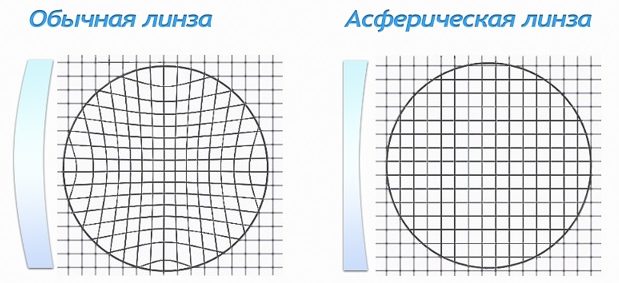 For low-dispersion lenses, the refractive index depends little on the length of the light wave. Their use in optics (especially long-focal ones) eliminates the appearance of colored spots (the result of light dispersion). The presence of low-dispersion and aspherical lenses indicates a high class of optics. Their price is also high.
For low-dispersion lenses, the refractive index depends little on the length of the light wave. Their use in optics (especially long-focal ones) eliminates the appearance of colored spots (the result of light dispersion). The presence of low-dispersion and aspherical lenses indicates a high class of optics. Their price is also high.
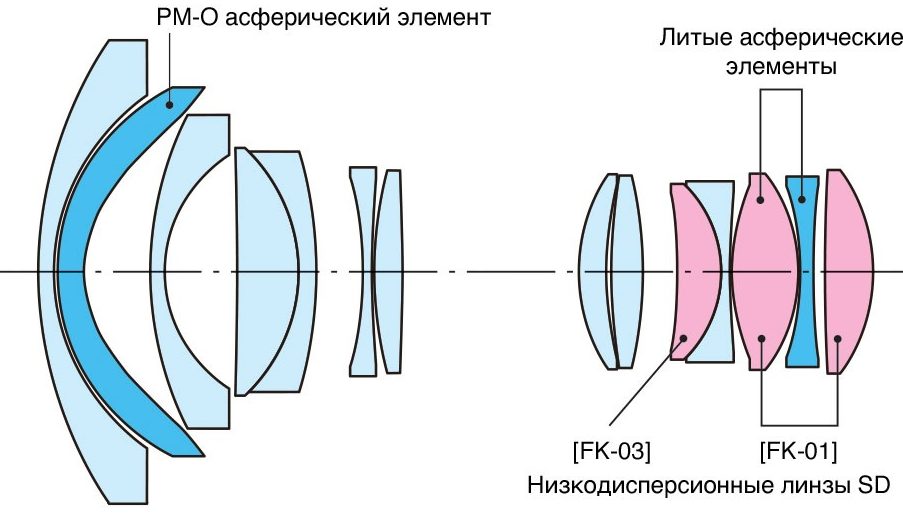
Color depth
The parameter responsible for the quality of color reproduction in the picture. The optimal color depth is considered to be 24-bit. Pros shoot with cameras with 36 or 48 bit color depth. The higher the setting, the more memory will be needed to save pictures.
Rating of quality cameras for beginners
Our review is composed of several types of cameras. To begin with, consider a compact device, popularly referred to as "soap dishes". Having got acquainted with the best samples, many begin to understand that this name is not suitable for all products of this type.
Canon PowerShot G9X
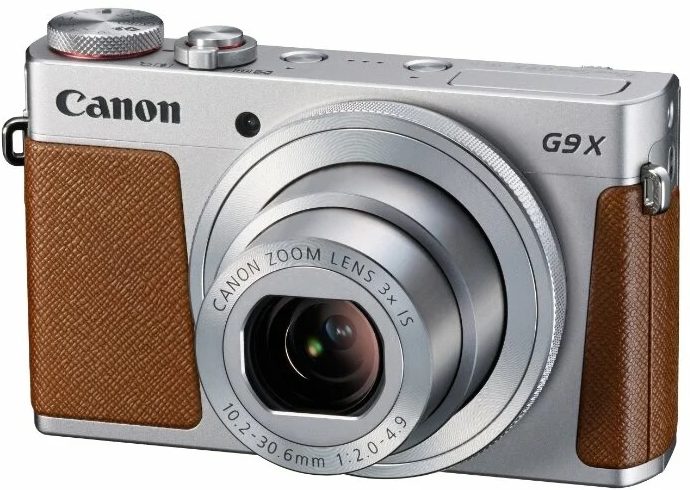
The tenth place is taken by the compact Canon PowerShot G9X. The device is really compact, it feels like a smartphone in your hand, the quality of photos is much higher, especially when shooting in dimly lit places or in the dark. 3x optical zoom delivers images without distortion. Creative people can appreciate the power of manual exposure and aperture settings. The full automatic, error-free mode will appeal to those who do not want to philosophize with the exposure meter and set the shutter speed and aperture manually. The stabilization system makes it possible to shoot blur-free photos and smooth videos despite natural hand tremors. Great travel camera. Average price: 26,450 rubles.
Advantages:
- compactness;
- photo of excellent quality;
- presence of a touch screen and control of settings like a smartphone;
- excellent image stabilization.
Disadvantages:
- the need to remove the battery for recharging.
| Model | Specifications | average price |
|---|---|---|
| Canon PowerShot G9 X | Compact camera. Equipped with a built-in flash and voltage stabilizer. A lens with a focal length of 28-84mm, 3x optical zoom, F2-4.9 aperture, aspherical lenses. Matrix type DSI CMOS with a maximum resolution of 5472x3648. 20.9 million pixels, incl. 20.2 million effective. Size - 1 inch, crop factor -2.7. LCD screen, touch, three-inch. used as a viewfinder. Exposure with manual adjustment of shutter speed and aperture, with bracketing function. | 26490 rubles |
Ricoh GR II
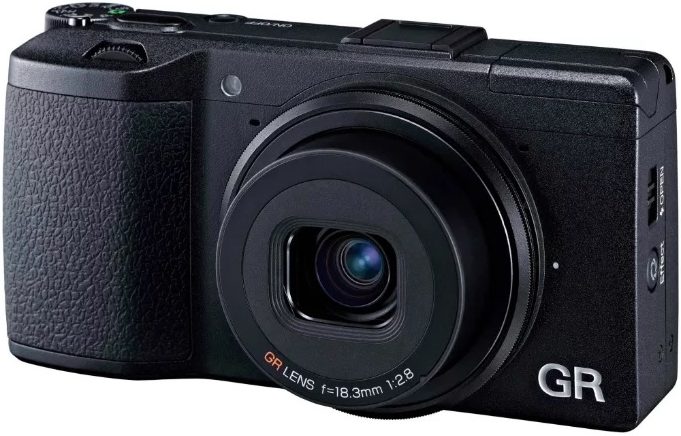
The ninth place is taken by the compact Ricoh GR II camera. The device easily fits in a trouser pocket, so it is always at hand. Manual setting of shutter speed and aperture is associated with some inconveniences, but the automation works flawlessly. The sharpness of the photos is very high. The color reproduction is flawless, no embellishments of one color or "belittling" of another. If the capacity of the batteries in 320 photos seems to someone to be small, this is decided by purchasing a spare battery. The finished pictures can be sent to any device via Wi-Fi. The average cost of the Ricoh GR II is 39,998 rubles.
Advantages:
- compactness;
- high quality of sharpness and color rendering of images;
- flawless work in automatic mode,
- convenient location of control buttons on the body;
- fast focusing.
Disadvantages:
- lack of image stabilizer.
| Model | Specifications | average price |
|---|---|---|
| Ricoh GR II | Compact camera complete with aspherical lens, F2.8 aperture. CMOS matrix, with a maximum resolution of 4928x3264, 16.9 mega pixels, of which 16.2 Mp are effective. APS dimensions - C 23.7 x 15.7 mm. There is no viewfinder. Its function is performed by a three-inch LCD touch screen. Exposure parameters - automatic, with shutter or aperture priorities, there is a manual adjustment of exposure and aperture, bracketing function. Shutter speed options from 300 to 1/4000 s. There is a USB connector that supports charging function. The battery capacity is sufficient for 320 photos. | 40620 rubles. |
Leica Q TYP 116
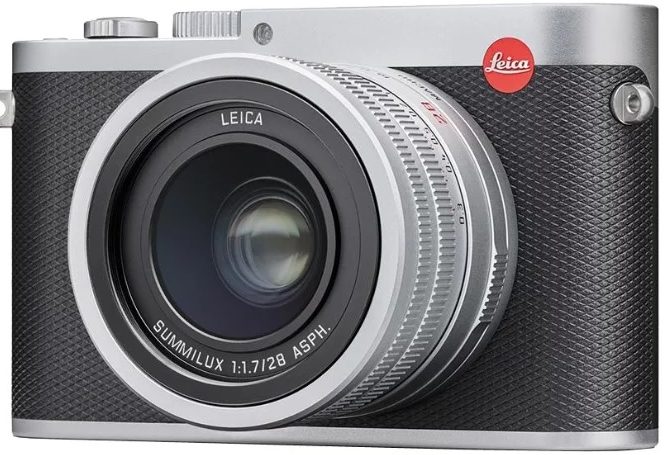
Eighth place is taken by Leica Q TYP 116, the iconic German brand Leica Camera AG. Traveling with this compact camera, you can take excellent pictures of landscapes and city streets. There will be no problem with portraits. It fits well in the hand and is equipped with cool summilux 1: 1.7 / 28mm ASPH optics. Perfectly reproduces colors, pictures are distinguished by excellent detail. The three-inch touch screen can function as a viewfinder. Control buttons and settings are very conveniently located.
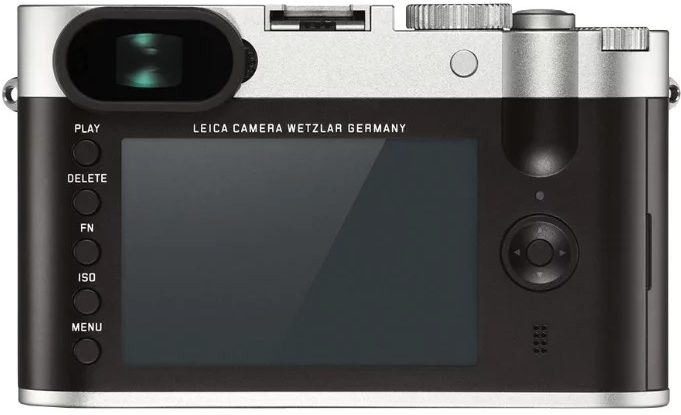
The presence of a WI-FI interface allows you to control the camera hanging on your chest and take pictures through the touch screen of your smartphone. Thanks to the optical image stabilization, photos are not smeared, videos are very smooth, without shaking or jerking. The average cost of the model is 325,000 rubles and is not available to everyone.
Advantages:
- compactness;
- ergonomics;
- convenient control and menu;
- good stabilizer;
- great pictures and videos.
Disadvantages:
- very high price.
| Model | Specifications | average price |
|---|---|---|
| Leica Q Type 116 | Compact type camera with CMOS sensor of 26.3 Mp, of which effective - 24.2 Mp., Dimensions 36 x 24 mm. Equipped with an electronic viewfinder and a 3-inch touchscreen that can also be used as a viewfinder. Exposure parameters - from 30-1 / 16000 seconds, with automatic and manual settings, bracketing, optical image stabilization. | 325,000 rubles |
Panasonic DC-GX9 Kit
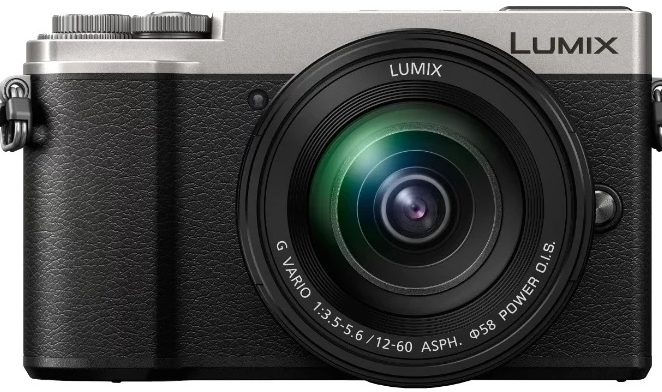
Ranking seventh in our rating, the product belongs to the mirrorless type devices.This DC-GX9, Japanese corporation Panasonic, one of the world's largest manufacturers of high quality home appliances and electronics. The ending Kit, in the name of the model, indicates that it is equipped with a standard lens. In this case, it is the G Vario, with apertures ranging from 3.5 to 5.6, focal lengths from 12 to 60 cm, and a 58 mm filter diameter. Made of high quality plastic, with a metal mount, the lens is assembled with high quality, without backlash, tolerances and other disgraces. Quite a suitable tool for a beginner. The quality of the images is excellent, the video is excellent, as in any model of this brand. The color is rendered quite naturally, without falling towards the oversaturation of any of the shades. Those who have a crush on mirrorless cameras are very happy with this model. Its average price is 54,000 rubles.
Advantages:
- rich choice of settings;
- high quality pictures and videos;
- high-quality assembly and good ergonomics;
- optical stabilizer;
- rotary touch screen.
Disadvantages:
- poor autofocus performance in dark rooms;
- insufficiently powerful batteries.
| Model | Specifications | average price |
|---|---|---|
| Panasonic DC-GX9 Kit | Mirrorless camera with interchangeable lenses, Micro 4/3 mount Matrix parameters; Live MOS; only 20.3 megapixels, including effective ones - 20.3 megapixels, with a maximum resolution of 5184 x 3888, the function of cleaning the matrix. The model is equipped with an electronic viewfinder, a three-inch rotary touch screen. Shutter speed and aperture settings are made in manual and automatic modes. The presence of WI-FI and bluetooth, USB connector, expand the possibilities of camera control. | 54,000 rubles |
Sony Alpha Ilce Kit 6400
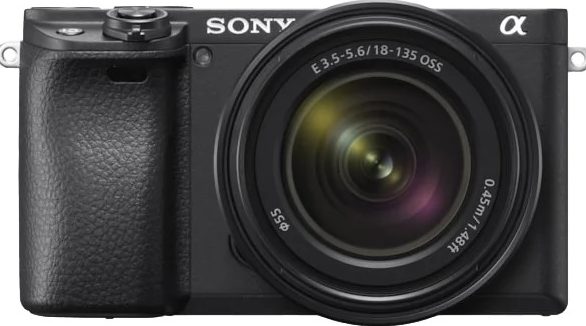
The sixth place is occupied by the model of the largest Japanese corporation Sony. Not so long ago, its Imaging Products & Solutions camera division launched the Alpha 6400, featuring a new Bions X processor, interchangeable optics and a Sony E mount. Image quality is ensured by an APS-C CMOS sensor (23.5 x 15 , 6) by 24.2 megapixels. The flip-down display is very handy for recording vlogs.
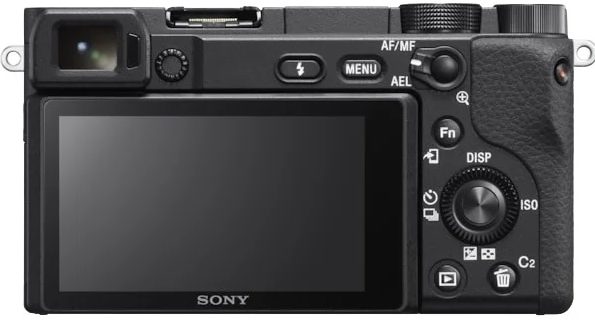
The battery capacity is enough for 410 shots. There is a hybrid autofocus with 425 points on the entire matrix. There is no matrix stabilization, and this is a minus. The metal housing protects the equipment from contamination. The average price is 63,480 rubles.
Advantages:
- the ability to change optics;
- metal case;
- protection against dust moisture;
- excellent image quality;
- affordable price.
Disadvantages:
- matrix stabilization is not provided;
- insufficient battery charge.
| Model | Specifications | average price |
|---|---|---|
| Sony Alpha ILCE-6400 Kit | Mirrorless device with the ability to change optics, bayonet Sony E. Matrix parameters: CMOS type, APS-C size 23.5 x 15.6 mm. Viewfinder type electronic. The model is equipped with a 2.95 '' swivel touch screen. The shutter speed range is 30-1 / 4000 s, the exposure and aperture settings are automatic and manual. The metal case protects the equipment from dust and moisture. Additional features and interfaces: USB, HDMI, WI-FI, bluetooth. | 63,480 rubles |
Canon EOS R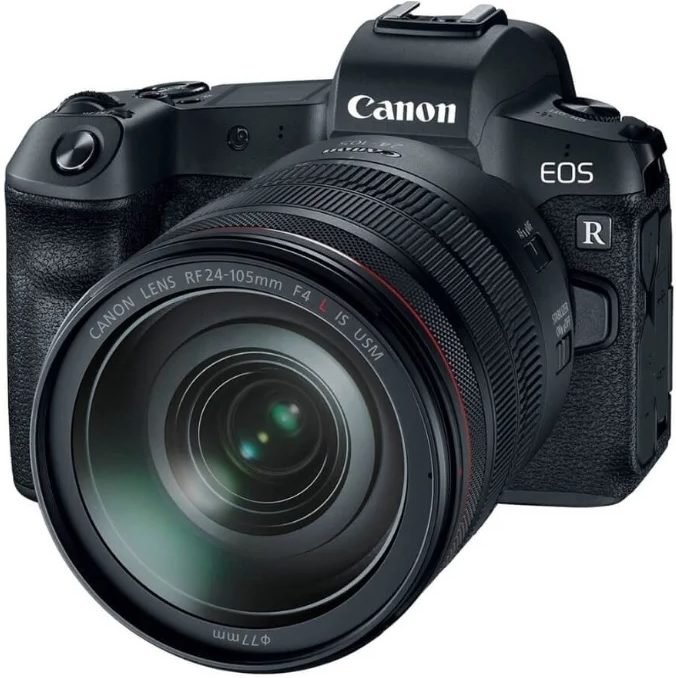
In fifth place is Canon's first full-frame mirrorless camera, the EOS R. The body material is magnesium alloy. All "filling" is protected from moisture and dust. The model is equipped with a new RF mount. New lenses have been specially developed and released for it, featuring fast autofocus settings. In order not to create difficulties for its customers, the company has equipped the new device with an adapter for the old EOS mount. Thanks to a shutter speed range of 30-1 / 8000 s, image quality remains high even in low light. Autofocus locks onto faces and subjects clearly in still and video modes. The average cost of the device is 109,900 rubles.
Advantages:
- high quality pictures;
- excellent ergonomics;
- accurate autofocus;
- good color rendering;
- rotary touch screen;
- protection from dirt when there is no lens.
Disadvantages:
- inconvenient transition from photo to video by pressing two buttons;
- long readiness time after switching on (compared to mirror models).
| Model | Specifications | average price |
|---|---|---|
| Canon EOS R Body | Mirrorless camera with the ability to change optics, equipped with an RF mount. Sensor parameters: CMOS, 31.7 megapixels total, including 30.0 effective, full-frame with cleaning function. Shutter speed and aperture settings are automatic and manual. The camera is equipped with an electronic viewfinder, rotary touch screen. Movies are recorded in MOV and MP4 formats, with a maximum frame rate of 120 / s. The camera can be controlled from a computer, smartphone, tablet. | 109,900 rubles |
Fujifilm X T-3 Kit
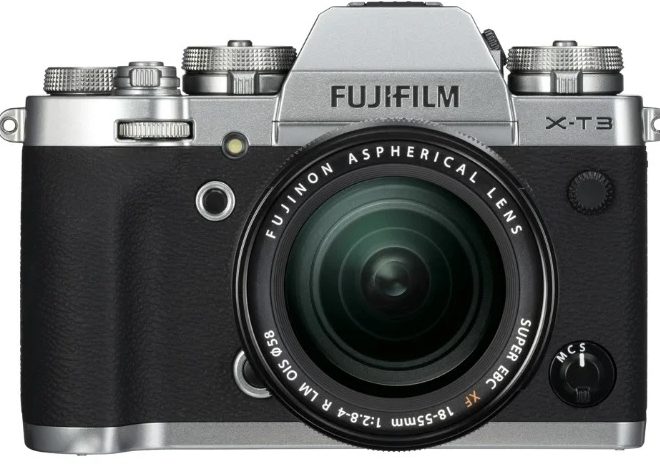
Fujifilm devices resemble old film cameras in their appearance. This is the style of the company. However, this is where retro ends. Fujifilm products have the most advanced features and equipment. The X T-3 Kit went on sale with an excellent stock lens and a Fujifilm X Mount that allows you to change optics, although the kit lens provides excellent image quality. The X T-3 has a new 23.5 x 15.6 mm APS-C sensor, a 26.1 megapixel X-Trans CMOS sensor. The device is equipped with a three-inch swivel touch screen.
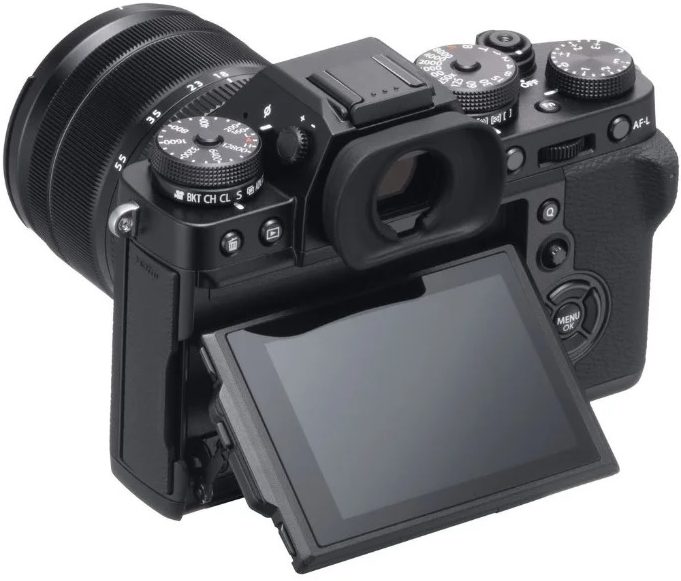
Average price: 114,770 rubles.
Advantages:
- compact model;
- retro design;
- excellent image quality;
- a huge selection of high quality Fujifilm optics.
Disadvantages:
- there is no optical stabilizer;
- inconvenient switching from photo to video.
| Model | Specifications | average price |
|---|---|---|
| Fujifilm X-T3 Kit | Mirrorless camera with the ability to change optics. Equipped with Fujifilm X Mount, with lens included. X-Trans CMOS sensor with cleaning function, size 23.5 x 15.6 mm, maximum resolution 6240 x 4160. Light sensitivity 80 to 3200 ISO. The device is equipped with a three-inch swivel touchscreen and electronic viewfinder. Exposure parameters - 900 - 1/32000 s. Manual settings of shutter speed and aperture are possible. Additional features: USB and HDMI connectors, for microphone and headphones, WI-FI, bluetooth | 114,770 rubles |
Nikon D3400
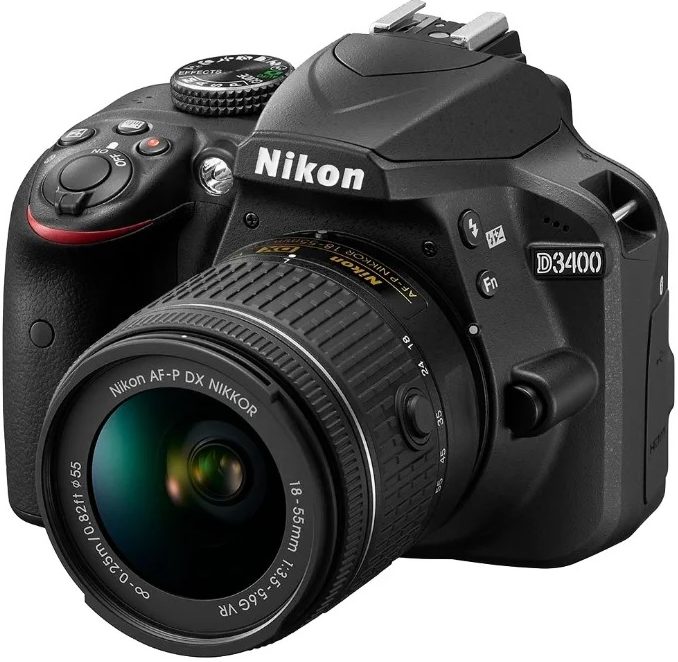
The first three lines of our rating are for DSLR cameras, and Nikon D3400 opens the top three. This device is more suitable for a beginner than others in terms of price, quality, functionality and ease of use. Unlike the previous model of this line, here the owner is provided with a connection with his smartphone for the subsequent publication of pictures, via the SnapBridge Bluetooth app for Nikon. Good image detail is provided by a 24.2 million pixel matrix. The Guide Mode is very useful for novice photographers. True, it is suitable for a landscape or portrait. In dynamic photography, while waiting for the "advice" of the camera, you can miss the frame. An excellent device for the first steps in photography, with an average price of 24,440 rubles.
Advantages:
- lightness and ergonomics;
- simple and intuitive control;
- high-quality pictures and videos;
- training mode.
Disadvantages:
- the screen is not rotatable and not touch-sensitive.
| Nikon D3400 Kit | Mirror-type camera, with Nicon F mount, with supplied lens. Matrix parameters: CMOS, APS-C 23.5 x 15.6 mm, with a maximum resolution of 6000 x 4000, without image stabilizer. The three-inch screen can be used as a viewfinder, in addition to the regular mirror. Exposure parameters: automatic and manual adjustments of shutter speed and aperture, functions of exposure compensation and exposure metering. 11-point hybrid autofocus. Optional: USB, HDMI, Bluetooth. | 23650 rubles |
Canon EOS 800 D
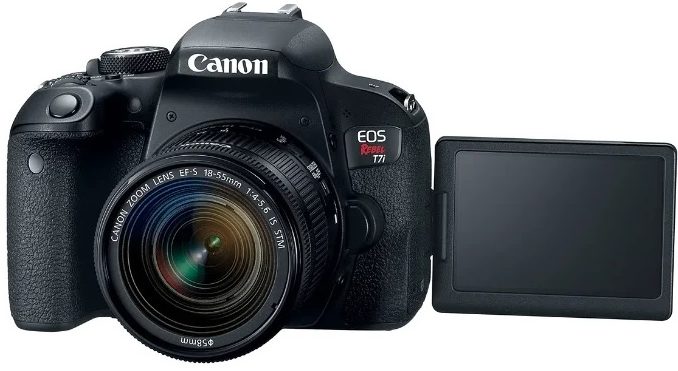
Canon EOS 800 D took second place. According to buyers, this is the best choice for a beginner, despite the truncated white balance settings. Users have appreciated the Dual Pixel autofocus, which allows shooting videos without having to worry about sharpness. The mode menu allows you to work with prompts, and with a set of experience, you can select the advanced user mode. The presence of Wi-Fi, Bluetooth and NFC provides the transfer of images to a smartphone for further processing or publication. The rotary touch screen is very convenient.The potential inherent in this model will allow a beginner to gain the necessary experience and start working professionally without changing the tool. Its average price is 38,159 rubles.
Advantages:
- excellent image quality;
- excellent autofocus;
- simple and understandable for beginners control;
- training mode.
Disadvantages:
- not found.
| Model | Specifications | average price |
|---|---|---|
| Canon EOS 800 D Kit | Mirror-type camera with Canon EF mount, Canon zoom Lens EF-S 18-55 mm. Matrix parameters: CMOS, APS-C 22.3 x 14.9 mm. Three-inch rotary touch screen. Exposure parameters: 30 - 1 / 4000s. There are functions for exposure compensation, metering and exposure bracketing. Hybrid focusing on 49 points, including 45 cross points. Additionally: USB, HDMI, Wi-Fi, Bluetooth, NFC, microphone and remote control connectors. | 38100 rubles |
Pentax K-70
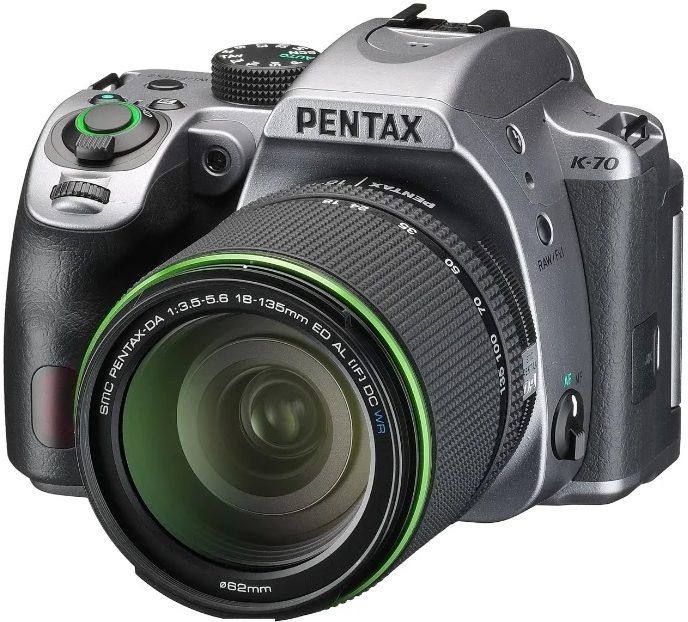
If you are going to try your hand at photography in extreme conditions, check out the Pentax K-70. Its casing reliably protects equipment from external influences. The product is rightfully considered all-weather. He is not afraid of sand storms and downpours. For those who are going to shoot in the rain, we recommend Pentax's waterproof optics, the WR series. All-weather DSLRs are very expensive, but the price of Pentax K-70 can be considered adequate, of course, among devices of its class. Among its other advantages are the presence of matrix stabilization, a three-inch swivel screen, a 24.2 megapixel CMOS matrix, microphone, USB, Wi-Fi inputs, compact dimensions. The device receives the best customer reviews. Average price: 56988 rubles.
Advantages:
- high quality images;
- compactness;
- stylish design;
- the presence of a matrix image stabilizer;
- rotary screen.
Disadvantages:
- The Dal 18-55mm DC WR RE kit lens, not the best option, but suitable for a beginner.
| Model | Specifications | average price |
|---|---|---|
| Pentax K-70 | Reflex camera with Pentax KA mount, Dal 18-55mm lens, DC WR RE. Matrix parameters: CMOS, APS-C, 24.24 Mp, with a maximum resolution of 6000 x 4000, a crop of 1.5, cleaning function. ISO 100 - 3200. Image is matrix shift stabilized, white balance is automatic and manual. The three-inch rotary screen can be used as a viewfinder. The standard viewfinder is mirror. Shutter speed and aperture are automatic and can be manually adjusted. There are functions for exposure compensation, metering and exposure bracketing. Autofocus hybrid, 11 points, incl. 9 cross. Additional equipment: USB, HDMI, Wi-Fi, microphone jack and remote control. Features: all-weather dustproof housing. Ability to work at low temperatures. | 56988 rubles |
Buying a camera is not cheap. On sale there is a great variety of models from different manufacturers, with various "bells and whistles", with a stylish and simple design, mid-range, expensive and very expensive. Before spending any money, decide on your desires, study the descriptions of the models, listen to the advice and recommendations of experienced photographers. The characteristics of your future "toy", its capabilities and price depend on whether photography becomes a business for you or remains just a hobby. Our review will help you find the right model and not make mistakes when choosing.

